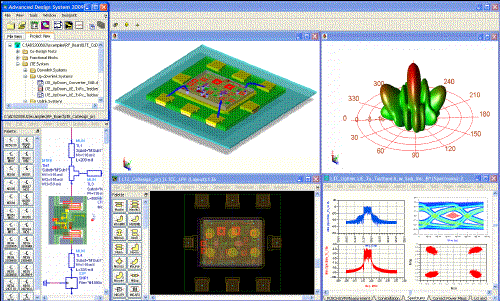Electromagnetic compatibility refers to the ability of electronic equipment to work harmoniously and effectively in various electromagnetic environments. The purpose of electromagnetic compatibility design is to make the electronic equipment can not only suppress all kinds of foreign interference, so that the electronic equipment can work normally in a specific electromagnetic environment, but also can reduce the electronic equipment itself to other electronic equipment electromagnetic interference.

Electromagnetic compatibility design of high frequency PCB
Use the correct routing strategy
The use of equal wiring can reduce the inductance of the wires, but the mutual inductance and distributed capacitance between the wires increase. If the layout allows, it is better to use the well shaped mesh wiring structure, the specific way is to use one side of the circuit board horizontal wiring, the other side of the longitudinal wiring, and then use metallized holes at the cross hole connected.
Choose a reasonable wire width
As the impact disturbance caused by transient current on printed lines is mainly caused by the inductance component of printed wires, the amount of inductance of printed wires should be minimized. The inductance amount of printed wire is proportional to its length and inversely proportional to its width, so short and fine wire is favorable for suppressing interference. The signal lines of clock leads, line drivers, or bus drivers often carry large transient currents, and printed conductors should be kept as short as possible. For discrete component circuits, when the width of printed wire is about 1-5mm, the requirements can be fully met. For integrated circuits, printed wire widths can be between 0-2-1-0mm.
Avoid electromagnetic radiation caused by high-frequency signals passing through printed conductors
In order to avoid electromagnetic radiation caused by high-frequency signals passing through printed wires, the following points should be paid attention to when wiring circuit boards:
1- The bus driver should be next to the bus it wants to drive.
For leads that leave the circuit board, the drive should be next to the connector.
2- The wiring of the data bus should be sandwiched between every two signal wires.
It is best to place the ground loop next to the least important address lead, as the latter often carries high-frequency current.
3- Minimize discontinuity of printed wires, such as wire width should not change, wire corners should be more than 90 degrees to prevent annular.
4- The clock signal lead is most likely to produce electromagnetic radiation interference, and should be close to the ground circuit when running, and the driver should be next to the connector.
Suppress crosstalk between PCB wires
In order to suppress crosswise between circuit board wires, the long-distance equal wiring should be avoided as far as possible in wiring design, the distance between wires should be drawn as far as possible, and signal wires should not cross with ground wires and power lines as far as possible. Crosstalk can be effectively suppressed by placing a printed line between some signal lines which are very sensitive to interference.